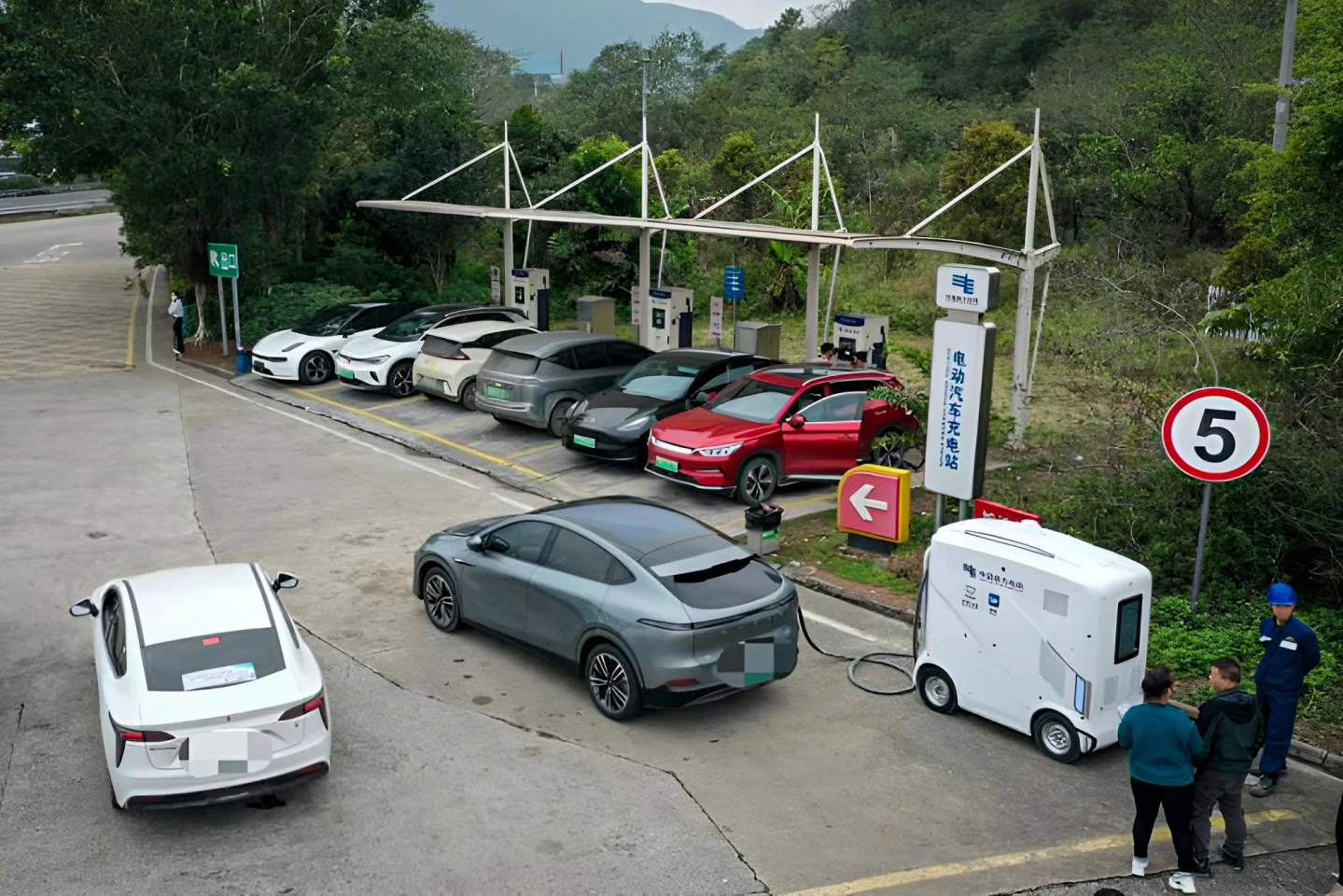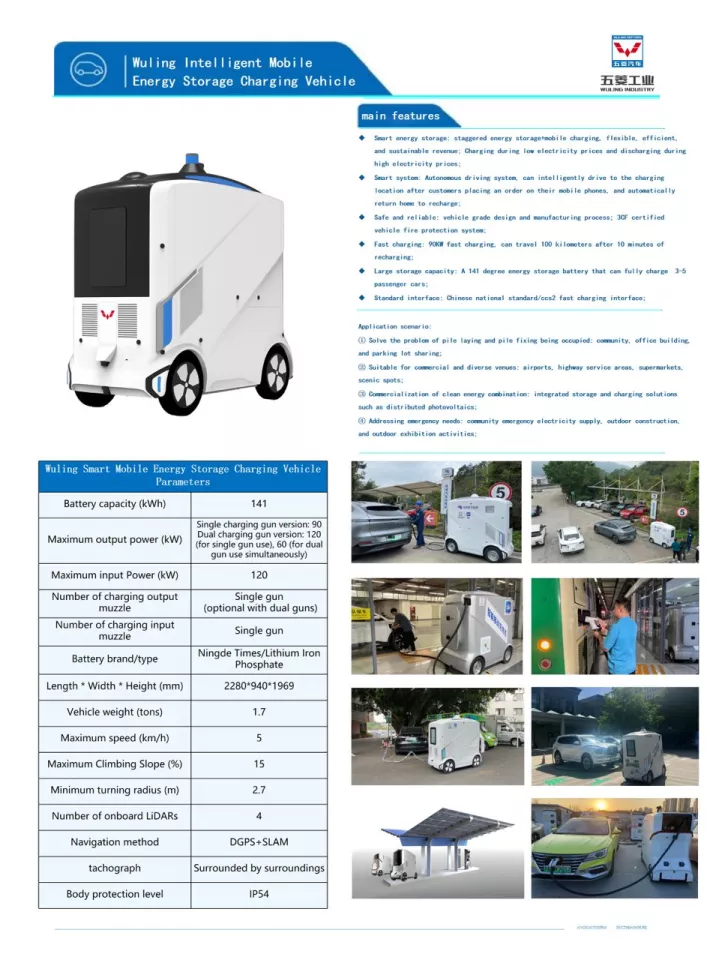Meet the EV equivalent of a full jerry can – a 141 kilowatt-hour battery charger on wheels, that can autonomously drive itself to wherever it's needed, flexibly extending charging networks and getting much-needed juice to stranded drivers.
Chinese automotive giant Wuling showed off two mobile EV charging stations in Guangzhou last week, – one roughly the size of an ice-cream trolley, and the other much larger, standing 7.5 feet tall, 6.5 feet long and 3.1 ft wide (2280 x 940 x 1969 mm) capable of self-driving.
The primary need being addressed by Wuling's four-wheeled, self-powered batteries is to enable EV charging stations to expand if demand spikes.

If you think queues at gas stations can be long, think about how long the line might get at an EV charging station on a holiday weekend in a city of ten million people – once the majority of vehicles on the road are electric...
That's happening a lot sooner in China than the West. China is switching its entire road-going fleet to EVs at an astonishing rate that's only eclipsed by small Scandinavian countries with populations the size of mid-tier Chinese cities, combined with enormous wealth driven by massive per-capita GDP figures. It's hard to see any other large country coming close to what the Middle Kingdom has achieved so far.

Trials in China, says Wuling, have shown that this autonomous battery, which currently has a top speed of 5 kmh, can substantially enhance the efficiency and flexibility of an EV charging station.
The autonomous Wuling EV charging station debuted at the Canton Fair (also known as the 2024 China Import and Export Fair) in Guangzhou last week, and the above image captured my first glance at the product as I stumbled across it on the show floor.
The aim is to sell the “Mobile Energy Storage Charging Vehicles” (MESCV) in different battery capacities, with the top-of-the-range 141 kWh self-driving model getting a very reasonable price tag of USD $42,000.

Wuling is calling this new genre of vehicle a “Mobile Energy Storage Charging Vehicle” (MESCV) and it has been created in response to the current needs of the Chinese marketplace, and we can see myriad uses for them beyond adding flexibility for charging stations.
It would not be surprising to see these vehicles become commonplace in car dealerships and service centres and maybe on any campus or factory needing a portable power supply or charging facility from time-to-time (i.e. all of them). The idea is for the MESCV to charge when tariffs are lowest and to be available to revive dead batteries anywhere.

The smaller VA100T drive-it-yourself Mobile Energy Storage Charging Vehicle comes with 30KWH, a 20KW output charger gun and will sell for USD $11,000.

Metaphorically, these machines are the EV equivalent of a full gas can, and in a country that is forging the way in the new energy vehicle economy, we’re expecting that an even larger powerbank will eventually be available in a faster, highway-capable autonomous vehicle that the world’s roadside service associations companies will buy in bulk.
Source: Wuling











